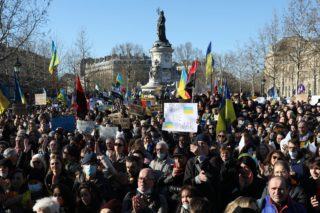The Trump administration is ordering schools on Native American reservations to reopen. California’s chief health officer has resigned. The pandemic has now sickened more than 20 million people, according to a Times database.
Governors say Trump’s order on pandemic relief would wreck state budgets.
Governors across the United States struggled on Monday with how to make good on President Trump’s order that their economically battered states deliver billions more in unemployment benefits to jobless residents.
Democrats were harshly critical of Mr. Trump’s order, which he signed on Saturday night after talks with Congress on a broad new pandemic aid package collapsed. But even Republican governors said the order could strain their budgets and worried it would take weeks for tens of millions of unemployed Americans to begin seeing the benefit.
Congress initially provided a $600-a-week supplement to unemployment benefits when the coronavirus pandemic shut down much of the United States in March. But that benefit lapsed on July 31, after talks between the White House and Congress broke down. Republicans had pushed for a $400 supplemental benefit, Democrats said it was not enough, and so on Saturday Mr. Trump ordered the $400 benefit — but said it was contingent on states to come up with $100 of that on their own.
Gov. Andrew M. Cuomo of New York told reporters on Monday that Mr. Trump’s order would cost his state about $4 billion by the end of the year, making it little more than a fantasy. He said that no New Yorker would see enhanced unemployment benefits because of the president.
“This only makes a bad situation worse,” Mr. Cuomo said. “When you are in a hole, stop digging. This executive order only digs the hole deeper.”
His comments were echoed by Gov. Andy Beshear of Kentucky, a Democrat like Mr. Cuomo, who said Mr. Trump’s order would cost his state $1.5 billion through the end of the year.
“It’s not workable in its current form,” Mr. Beshear said. “It’s something virtually no state can afford.”
FEATURED IMAGE: President Trump at his coronavirus news conference on Monday. Governors across the country on Monday struggled to figure out how to deliver billions more in unemployment benefits to jobless residents. Doug Mills/The New York Times
Trump considers a rule that would block Americans thought to have the virus from returning home.
President Trump is considering new immigration regulations that would allow border officials to temporarily block American citizens and legal permanent residents from returning to the United States from abroad if authorities believe they may be infected with the coronavirus.
In recent months, Mr. Trump has imposed sweeping rules that ban entry by foreigners into the United States, citing the risk of allowing the virus to spread from hot spots abroad. But those rules have exempted two categories of people attempting to return: American citizens and noncitizens who have already established legal residence.
Now, a draft regulation would expand the government’s power to prevent entry by citizens and legal residents in individual, limited circumstances. Federal agencies have been asked to submit feedback on the proposal to the White House by Tuesday, though it is unclear when it might be approved or announced.
Under the proposal, which relies on existing legal authorities of the Centers for Disease Control and Prevention, the government could block a citizen or legal resident from crossing the border into the United States if an official “reasonably believes that the individual either may have been exposed to or is infected with the communicable disease.”
The draft, parts of which were obtained by The Times, explicitly says that any order blocking citizens and legal permanent residents must “include appropriate protections to ensure that no Constitutional rights are infringed.” And it says that citizens and legal residents cannot be blocked as an entire class of people.
The documents appear not to detail how long a citizen or legal resident would be required to remain outside of the United States.
The draft memo says the prohibition on the introduction of U.S. citizens or legal residents from abroad would apply “only in the rarest of circumstances,” and “when required in the interest of public health, and be limited in duration.”
Still, if Mr. Trump approves the change, it would be an escalation of his government’s longstanding attempts to seal the border against what he considers to be threats, using the existence of the coronavirus pandemic as a justification for taking actions that would have been seen as draconian in other contexts.
A spokesman for the Department of Homeland Security declined to comment. A spokesman for the C.D.C. said late Monday afternoon that he would seek to gather more information about the proposal.
It is unclear whether there are any existing rules that would allow American citizens and legal residents to be prohibited from returning to the United States for a period of time because of concerns about a communicable disease. Immigration officials have broad authority to deny entry to people based on national security issues.
The rule appears to apply to all points of entry into the United States, including at airports and along both the northern and southern borders. In particular, the draft could impact the border with Mexico, where many American citizens and legal residents cross back and forth frequently.
The rule notes the prevalence of the coronavirus in Mexico as evidence of the need for the modified rule, citing the death on Aug. 2 of the health minister in the Mexican border state of Chihuahua, who the order says died of Covid-19 after a two-week hospitalization.
FEATURED IMAGE: Dulce Garcia, right, crosses the border from Mexicali, Mexico, to Calexico, Calif., to get to work in July. Like many in Mexicali, Ms. Garcia lives in Mexico but works in Calexico. Gregory Bull/Associated Press
By The New York Times






